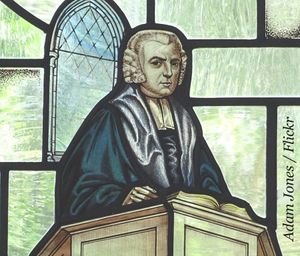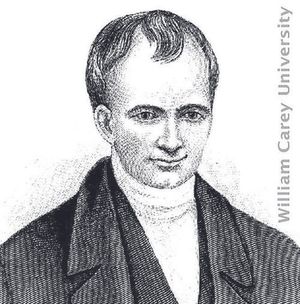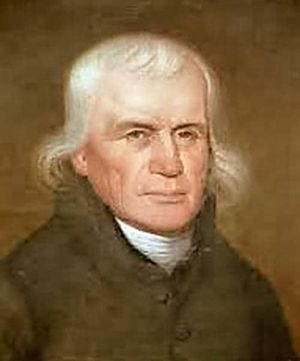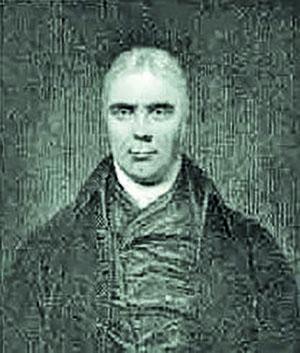
Down to the eighteenth century, theologians regularly considered the concept of beauty to be central to any discussion of the divine nature. Evangelical theologians were no exception to this. As they read the Bible, especially the Hebrew Scriptures, they were struck by various places where God is described as beautiful.
Old Testament evidence
For example, the psalmist asserts: ‘One thing I have desired of the Lord, that will I seek: that I may dwell in the house of the Lord all the days of my life, to behold the beauty of the Lord’ (Psalm 27:4).
Here, the psalmist ascribes beauty to God as a way of expressing his conviction that a face-to-face vision of God is the most profound experience available to a human being. Again, in Psalm 145:5 the psalmist meditates ‘on the glorious splendour’ (beauty) of God’s majesty. Similarly, the eighth-century BC prophet Isaiah predicts a coming day when God will be ‘a crown of glory and a diadem of beauty’ to his people (Isaiah 28:5).

The glory of God
The most important biblical concept in this connection is probably that of ‘glory’. When used with reference to God it emphasises his greatness and transcendence, splendour and holiness. God is thus said to be ‘clothed’ with the attributes of glory (Psalm 104:1), and his works to be full of his glory (Psalm 111:3). The created realm, the product of his hands, speaks of this glory day after day (Psalm 19:1-2).
But it is especially in his redemptive activity that God’s glory is revealed. The glory manifested in redemption is to be proclaimed throughout all the earth (Psalm 96:3), so that one day ‘the earth will be filled with the knowledge of the glory of the Lord’ (Habakkuk 2:14). In other words, it was their encounter with God on the plane of history that enabled the biblical authors to see God’s beauty and loveliness shining through the created realm.
Early theologians
In the centuries after Christ, early theologians built upon these biblical foundations. For instance, the fourth-century North African thinker Augustine (354-430) identifies God and beauty in a famous prayer from his Confessions:

‘I have learnt to love you late, Beauty at once so ancient and so new! I have learnt to love you late! You were within me, and I was in the world outside myself. I searched for you outside myself and, disfigured as I was, I fell upon the lovely things of your creation … The beautiful things of this world kept me from you and yet, if they had not been in you, they would have had no being at all’.
The material realm is only beautiful because it derives both its being and beauty from the One who is Beauty itself, namely, God. Augustine intimates that, if he had been more attentive to the derivative beauty of the world, he would have been led more promptly to its divine source.
Thomas Aquinas (c. 1225-1274), the quintessential mediaeval theologian, argues that God is called Beauty because ‘he gives beauty to all created beings’. He is most beautiful both because of his exceeding greatness (like the sun in relation to hot things) and because he is the source of all that is beautiful in the universe. He is thus beautiful in himself and not in respect of anything else.

And since God has beauty in himself, he can communicate it to his creation. He is, therefore, the exemplary cause of all that is beautiful. Or, as Aquinas puts it elsewhere: ‘Things are beautiful by the indwelling of God’.
Jonathan Edwards and the beauty of God
With the beginning of the modern era, a profound reconstruction takes place in the way beauty in general is perceived. The watershed is the eighteenth century, when there is a dramatic movement away from the question of the nature of beauty to a focus upon man’s experience of beauty.
The perception of beauty now becomes the basic concept in writing and thinking about this subject. And it is intriguing that there is a corresponding diminution of interest in the ascription of beauty to God.
Nevertheless, one can still find vital representatives of the older tradition. One such figure is the New England theologian, Jonathan Edwards (1703-1758). Edwards stands at the centre of eighteenth-century Evangelical spirituality and was deeply conversant with earlier theological thought, especially that of the Augustinian tradition.
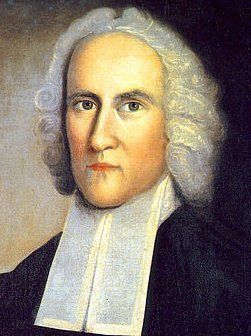
There is no doubt that beauty is a central and defining category in Edwards’ thinking about God. He regards beauty as a key distinguishing feature of the divine being: ‘God is God,’ he writes in his Religious Affections, ‘and distinguished from all other beings, and exalted above them, chiefly by his divine beauty, which is infinitely diverse from all other beauty’.
Unlike creatures, who receive their beauty from another (namely God), it is ‘peculiar to God’, writes Edwards elsewhere, ‘that he has beauty within himself’. Edwards’ conception of divine beauty thus serves to accentuate the biblical idea of the uniqueness and transcendence of God.
Primary beauty
Edwards’ central interest is not in what he calls ‘secondary beauty’, the beauty of created things, but ‘primary beauty’, that which pertains to God. His writings contain almost no discussion of the nature of fine art or human beauty. Even his occasional rhapsodies regarding the beauties of nature function chiefly as a foil to deeper reflections on the divine beauty. Secondary beauty holds interest for him only because it mirrors the primary beauty of spiritual realities.
Yet, this does not mean that Edwards has no interest in the beauty of this world. In his Personal Narrative, for example, where he is describing his conversion to Christianity, he indicates that his conversion wrought a change in his entire outlook on the world:

‘The appearance of everything was altered: there seemed to be, as it were, a calm, sweet cast, or appearance of divine glory, in almost everything. God’s excellency, his wisdom, his purity and love, seemed to appear in everything; in the sun, moon, and stars; in the clouds, and blue sky; in the grass, flowers, trees; in the water, and all nature; which used greatly to fix my mind. I often used to sit and view the moon, for a long time; and so in the daytime, spent much time in viewing the clouds and sky, to behold the sweet glory of God in these things’.
World-view
The striking thing about this passage is what Michael McClymond has recently called Edwards’ ‘capacity for seeing God in and through the world of nature’. By travelling from the primary beauty of God to the secondary beauty of the created realm, Edwards is consciously seeking to undo one of the major characteristics of modern western thinking, namely, the replacement of a God-centred world-view by a man-centred one.
For Edwards, the beauty of creation exhibited, expressed and communicated God’s beauty and glory to men and women. In nature God’s beauty is visible. Thus, with regard to Christ, he writes: ‘the beauties of nature are really emanations or shadows of the excellencies of the Son of God’.

When, therefore, we are delighted with flowery meadows and gentle breezes, we may see them as the emanations of the sweet benevolence of Jesus Christ, by whom ‘all things were created’ (Colossians 1:16). When we behold the fragrant rose and lily, we see his love and purity. The green trees, and fields, and singing of birds reflect his infinite joy and benignity. The crystal rivers and murmuring streams are the footsteps of his favour, grace and beauty.
When we observe the light and brightness of the sun, the golden edges of an evening cloud, or the beauteous bow, we behold the adumbrations of his glory and goodness. The blue sky speaks of his mildness and gentleness.
A lost faculty
There are also many things wherein we may behold his awful majesty, in the sun in his strength, in comets, in volcanoes, in the hovering thunder-clouds, in ragged rocks, and in ‘the brows of mountains’.
For Edwards, of course, it follows that those who ignore the beauty of God in creation are committing a spiritual fault. Moreover, Edwards is convinced that men and women uniformly fail in this regard, for they have lost the faculty to see the visible beauty of God in his creation. They perceive the secondary beauty, but fail to see the divine beauty that saturates nature.
This faculty needs to be restored. This is an area that we will examine in next month’s article on Evangelical spirituality.



